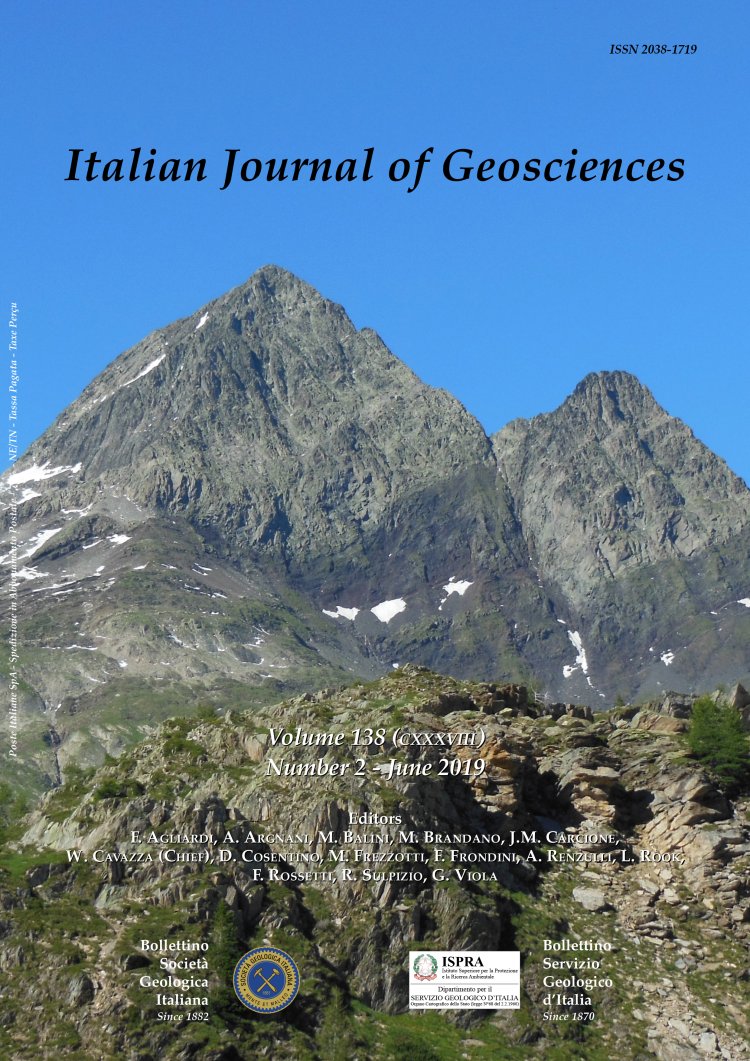
The origin of gas seeps in the Northern Adriatic Sea
Federica Donda (1), Umberta Tinivella (1), Emiliano Gordini (1), Giuliana Panieri (2), Valentina Volpi (1), Dario Civile (1), Edy Forlin (1), Lorenzo Facchin (1), Mihai Burca (1), Andrea Cova (1) & Giulia M. Ferrante (1)
(1) Istituto Nazionale di Oceanografia e di Geofisica Sperimentale (OGS), Borgo Grotta Gigante 42/c, 34010 Sgonico (Trieste), Italy.
(2) Centre for Arctic Gas Hydrate, Environment and Climate, The Arctic University of Norway, N-9037 Tromsø, Norway.
Corresponding author e-mail: fdonda@inogs.it.
DOI: https://doi.org/10.3301/IJG.2018.34
Volume: 138 (2019) f.2
Pages: 171-183
Abstract
A multidisciplinary approach has been used for the first time to study the widespread occurrence of hydrocarbon seeps in the northern Adriatic Sea. Geological, geophysical and geochemical analyses were performed to identify and characterize the gas-charged fluids occurring throughout the Plio-Quaternary succession, and to date the shallow gas seeping at three leakage sites. The analysis of CHIRP, morpho-bathymetric and multichannel seismic data allowed us to
identify different types of gas-related features, which occur within the whole Plio-Quaternary succession up to the seafloor and to the water column. Quantitative analyses of CHIRP data were conducted to better define, characterize and quantify the gas occurrence within the uppermost stratigraphic succession. CHIRP data also allowed the identification of the gas leakage sites. Three gas seepage areas were sampled with the aim to determine the gas composition and origin.
The isotopic analyses revealed that seep gases are microbial in origin, and are primarily composed of methane, mostly formed within relatively laterally persistent Late Pleistocene peat layers, which are widely distributed throughout the northern Adriatic Sea and represent the main source of organic matter feeding the seeping gases.
Keywords
Get Full Text